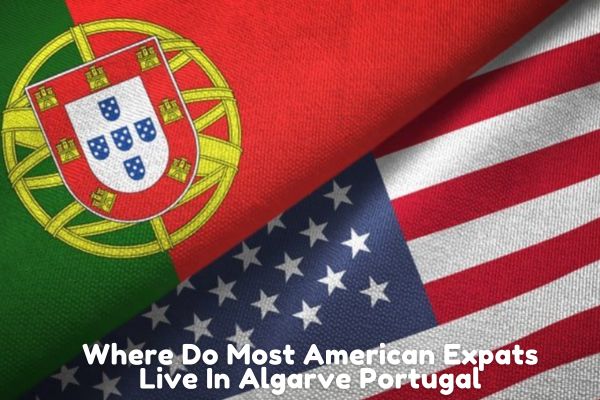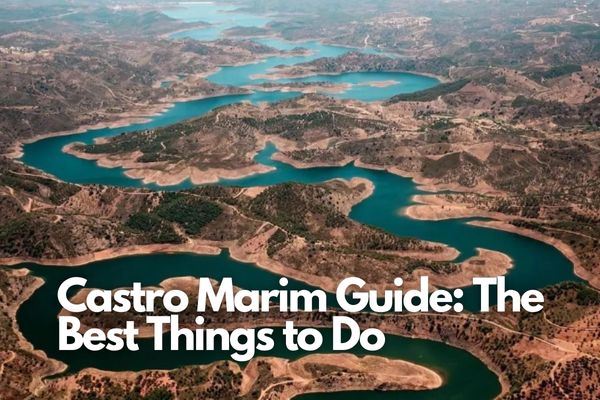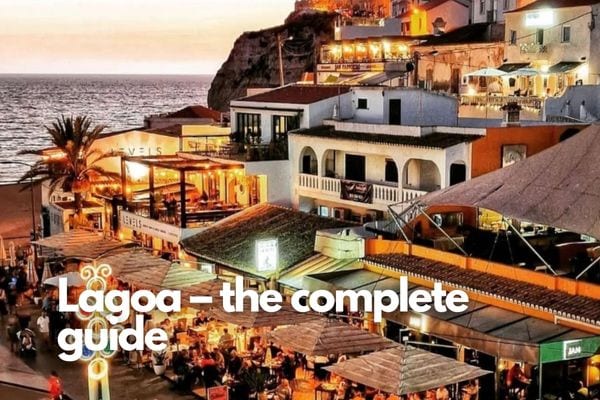Exploring the Fisherman’s Trail in Portugal– a guide
Embark on a comprehensive journey along the mesmerizing Fishermen’s Trail, detailed in our extensive walking itinerary guide. This post offers a wealth of information on each stage of the trail, including distances, elevation profiles, estimated times, and accommodation options to enhance your experience.
Table of Contents
Discovering the Fisherman’s Trail Location
Trace the enchanting Fisherman’s Trail along the sun-kissed southern coast of Portugal, stretching from Porto Covo to Lagos. The adventure commences near Sines, a picturesque town located 170 km south of Lisbon, guiding you through the diverse landscapes of Alentejo and Algarve, two captivating Portuguese provinces.
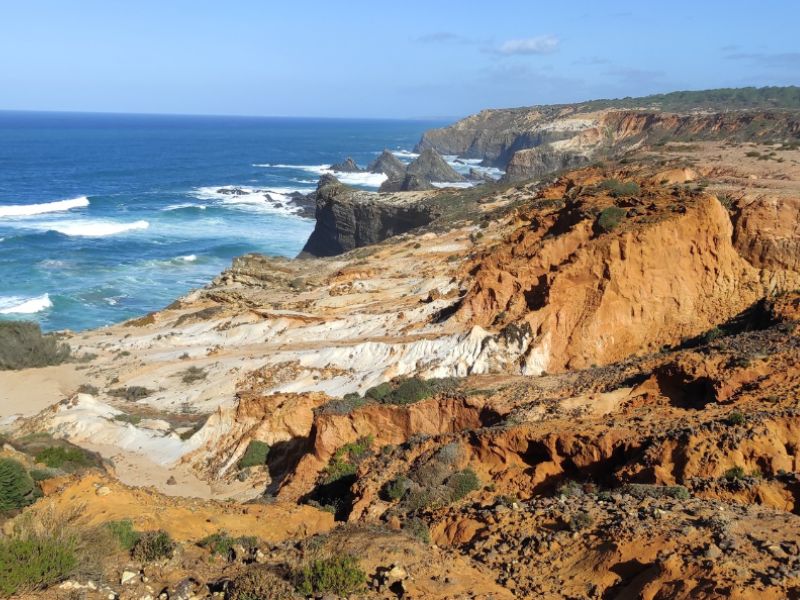
Fisherman’s Trail Navigation with GPX
| Day 1. Porto Covo – Milfontes. Download | Day 7. Arrifana – Carrapateira. Download |
| Day 2. Milfontes – Almograve. Download | Day 8. Carrapateira – Vila do Bispo. Download |
| Day 3. Almograve – Zamjubeira. Download | Day 9. Vila do Bispo – Sagres. Download |
| Day 4. Zambujeira – Odeceixe. Download | Day 10. Sagres – Salema. Download |
| Day 5. Odeceixe – Aljezur. Download | Day 11. Salema – Praia da Luz. Download |
| Day 6. Aljezur – Arrifana. Download | Day 12. Praia da Luz – Lagos. Download |
The Extent of the Fisherman’s Trail
Covering a total distance of 230 km/143 mi, the Fisherman’s Trail demands an immersive journey of 11-13 days for its completion, promising a fulfilling and challenging experience for avid walkers.
Optimal Timing for the Fisherman’s Trail
Embrace the mild climate of southern Portugal as you consider the ideal time to traverse the Fisherman’s Trail. Personally, we recommend the spring months, particularly April to May, when the weather is pleasantly mild, flowers and trees adorn the landscapes, and prices are more budget-friendly. However, be prepared for increased trail traffic during this popular season.

Should you prefer solitude and cooler temperatures, avoid the peak summer months of July and August, known for intense heat and crowded trails. Optimal walking conditions present themselves in October and early November, striking a balance between comfortable weather and fewer fellow hikers.
For those seeking a tranquil off-season adventure, December to March offers a unique experience, with open hotels and hostels providing a quiet retreat. While the south remains sunny even in winter, expect chilly and rainy days, especially along the West Coast.
Where Does the Adventure Begin?
Your journey along the Fisherman’s Trail commences at the scenic S.Torpes Beach, located just 10 km before the charming town of Porto Covo. The trail unfolds its beauty over 181 km/112 mi if you start in Porto Covo or 191 km/118 mi if initiated from St.Torpes Beach, concluding in the captivating destination of Lagos. Initially concluding in Sagres, the route was later extended to add the Sagres – Lagos segment.
A notable flexibility of the Fisherman’s Trail is the option to select specific sections for exploration, enabling you to customize your adventure based on available time and desired walking distance. Each portion of the trail can serve as an independent day hike, offering a perfect blend of coastal exploration and beach relaxation.
Prominent Route Options:
| Porto Covo – Odeceixe | S.Torpes Beach/Porto Covo – Sagres | S.Torpes Beach/Porto Covo – Lagos | S.Topres Beach/Porto Covo – Santiago de Cacém |
| 76 km/47 mi 4 days | 191 km/118 mi 9-10 days | 230 km/142 mi 12-13 days | 196 km/121 mi 10-11 days |
Embark on the original 4-day trail from Porto Covo to Odeceixe, covering a distance of 76 km/47 mi. This initial segment, now part of the Historical Route of the Rota Vicentina, serves as the foundation of the Fisherman’s Trail.
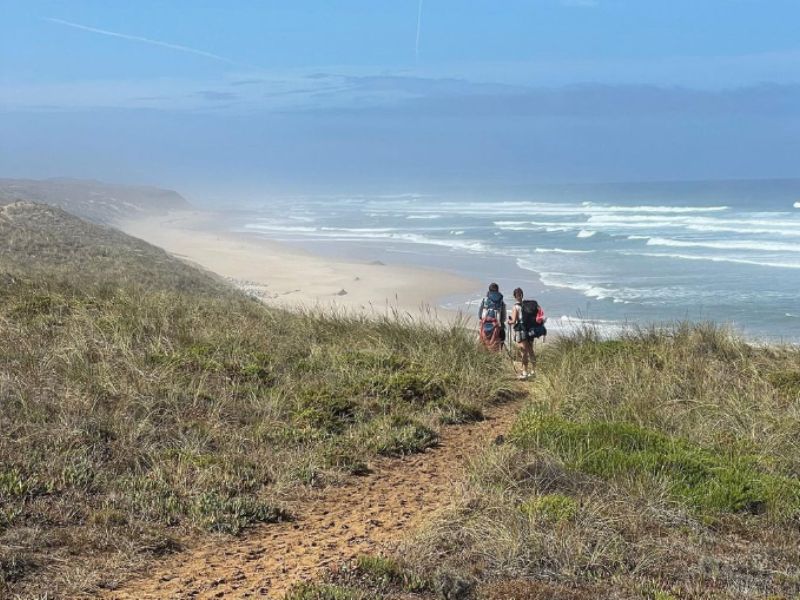
Choose the Porto Covo to Sagres stretch for an extended journey, meandering along the coast for a total of 191 km/118 mi or 181 km/112 mi if commencing at St.Torpes Beach. Allow 9-10 days to fully absorb the coastal wonders.
For the ultimate adventure, conquer the entire Fisherman’s Trail from S.Torpes Beach/Porto Covo to Lagos, covering 230 km/142 mi in 12-13 days. Immerse yourself in the diverse landscapes and seascapes along this captivating route.
Combine the Fisherman’s Trail with the Historical Way by starting in S.Torpes Beach/Porto Covo, navigating the coastal beauty to Odeceixe, and then transitioning to the inland Historical Route to reach Santiago do Cacém. This combined route spans 196 km/121 mi and requires 10 days for completion.

The Trail’s Highlights
Revel in the breathtaking scenery along the entirety of the Fisherman’s Trail, with each section offering its unique charm. Personally, my favorite stretch is between Sagres and Lagos, perhaps influenced by our residence in Lagos and our repeated exploration of this particular part. The cliff views from Carrapateira to Vila do Bispo, tracing the coastline, stand out as one of the most spectacular features of the trail.
Accommodation Experiences
Anticipating accommodation concerns, we initially worried about finding suitable options along the route. Despite the absence of a comprehensive list, we compiled a detailed selection of hostels, hotels, and campsites at each stage of the journey.
Every town along the route boasts a variety of hostels and guesthouses, ensuring accommodation availability throughout the journey. Additionally, campsites are strategically located in Porto Covo, Vila Nova de Milfontes, Zambujeira do Mar, Odeceixe, Aljezur, and Sagres.
While we typically avoid advance bookings, we opted to secure reservations a few days prior to our journey. This proactive approach proved beneficial, considering the limited capacity of most accommodations, primarily comprised of small hostels and guesthouses with a handful of rooms or beds. Our experience in early May, a less busy season, suggests that for those walking between June and August, pre-booking is strongly recommended, even for campers. Contacting campsites in advance can provide insights into their occupancy levels.
Tips for Accommodation Booking:
- Be mindful of the check-in time, typically around 3 pm in most hotels.
- Ensure your hotel is situated within the town, avoiding locations 5 km outside.
- Prevent navigation hiccups by identifying your accommodation on Google Maps beforehand.
- Clarify payment terms; ascertain whether you pay when booking or upon arrival.
Top Guidebooks for the Fisherman’s Trail
Disclaimer: Stingy Nomads participates in the Amazon Services LLC Associates Program. By purchasing recommended items through our links, we may earn an affiliate commission at no additional cost to you.
For the most reliable guidance, the official guidebook from the Rota Vicentina organization is a must-have. Obtain it online or from information offices along the route. In Porto Covo, you can purchase the guidebook and map at Papelaria O Correiro on Vasco da Gama Street, just a block away from the church.
Navigating to the Trail
Efficiently reach the trail with direct buses from Lisbon to Porto Covo/São Torpes Beach. Rede Expressos buses depart regularly from Sete Rios Bus station in Lisbon, taking approximately 2 hours and 10 minutes. Tickets, priced at 16.5 Euro, can be purchased at the terminal or online. For those starting at S.Torpes Beach, situated 10 km north of Porto Covo, request the driver to stop at Praia de São Torpes.
Ensure a smooth return journey to Lisbon by utilizing direct buses available from Odeceixe, Sagres, Lagos, and Santiago do Cacém. Purchase tickets and check the schedule on the Rede Expressos website.
Luggage Convenience on the Trail
Streamline your trek by availing the luggage transfer service offered by Vicentina Transfers. For 15 Euro per section, they deliver your luggage door to door between various accommodations along the route, including campsites. Note that this service focuses solely on luggage transfer and does not handle accommodation bookings. Prior to arranging the service, ensure your accommodations are booked.
While the cost may be higher compared to other routes, such as the Coastal Route of the Portuguese Camino, the convenience of not lugging a heavy backpack every day may outweigh the expense.
Estimating Expenses on the Fisherman’s Trail
The overall cost of your Fisherman’s Trail experience hinges on your choice of accommodation – be it camping, dormitories, or private rooms – as well as the season. For a budget of 25-30 Euros per person per day, camping and preparing your meals is a prudent choice. Opting for dormitories and self-catering brings the daily budget to around 30 Euros per person. If you prefer private accommodations, dining out occasionally, and enjoying drinks, consider budgeting 45+ Euros per day per person.
Accommodation Insights
Keep in mind that accommodation costs fluctuate significantly with the season, reaching their peak between May and September. During the summer months, prices may double compared to the winter rates.
Opting for a private room offers comfort, and surprisingly, it can be economically advantageous. Some hotels provide triple and family rooms, making it a cost-effective option for group travelers. Budget double rooms generally range between 30 and 40 Euros, with occasional instances of finding rooms for 25 Euros during off-peak months.
Choosing a bed in a dormitory is a wallet-friendly alternative. Due to the limited number of hostels on the route and high demand, advance booking is recommended. Dorm bed prices hover around 20 Euros, depending on the season.
For the most economical choice, camping comes with variable prices, peaking in August. However, the added weight of carrying camping gear, including a tent, mattress, sleeping bag, and cooking equipment, should be considered. Camping costs range from 10 to 15 Euros per person per night.
Dining Considerations
Local grocery stores in every town along the route allow budget-conscious travelers to prepare their meals. Booking accommodations with kitchen facilities is advisable. The cost of shopping for three meals (lunch, dinner, and breakfast) ranges from 10 to 12 Euros per person. Additionally, many supermarkets have cafes offering relatively affordable meals and snacks compared to restaurant prices.
While eating out tends to be pricey along the Fishermen’s Trail, some restaurants offer a set lunch option, known as Menu do Dia, typically priced at 10 Euros for a dish. Dinner outings may cost around 15 Euros per person, including drinks. For a quick breakfast (toasted sandwich and coffee), expect to spend around 3 Euros.
We frequently indulge in coffee stops, and Portugal’s coffee scene is a delight for enthusiasts. Enjoy a cup of Espresso for approximately 0.7 Euros, while coffee with milk (Galao) is around 1.5 Euros. Americano and cappuccino may cost slightly more, ranging between 1.2 and 3 Euros respectively.
Our Expenditure Breakdown for 2 People Over 11 Days
During our 11-day journey, my companion and I opted for private rooms and dormitories, occasionally dining out while preparing our meals for the most part. We didn’t utilize a luggage transfer service, but if you choose to, consider adding 15 Euros per person per day to our budget.
- Accommodation – 422 Euros
- Shopping (including food and toiletries) – 116 Euros
- Eating out – 151 Euros
- Transport – 70 Euros (15 Euros per person for the Lisbon – Porto Covo bus, 20 Euros per person for the Lagos – Lisbon bus)
- Coffee and Pastries – 35 Euros
Total: 794 Euros, equivalent to 36 Euros per person per day.


